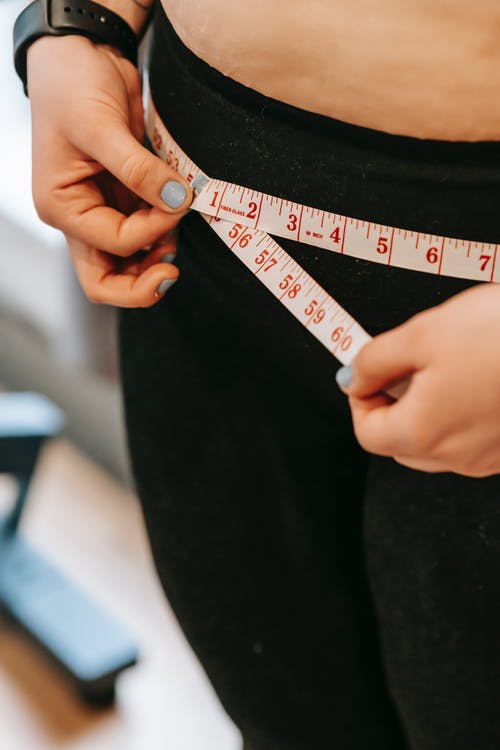In the fitness industry, one of the most common complaints or queries we get when somebody has recently started on a new diet and exercise plan is… why has my weight loss stopped/slowed down? People often start off in pursuit of weight loss full of enthusiasm and commonly see the numbers drop drastically on the scales for a few weeks, spurring them on to expect this will continue. However, over time despite still trying just as hard to exercise and eat well, the numbers on the scales become too stubborn to budge. Sometimes people may even notice clothes feeling looser and other desirable changes, yet the scales register no weight loss. Why does this happen and what does it mean? This blog aims to explain why weight loss doesn’t necessarily equal fat loss and why there is far more to it than a number on the scales.
To understand this in greater detail, there are some key words and terms used by medical and exercise professionals that it’s important to understand. The first of these, and probably the most widely used, is Body Mass Index (BMI). If you visit a doctor or health professional and they check your weight, they will almost certainly calculate your BMI. This is a simple equation that considers factors such as height, weight, age and gender to come up with an individualised value, referred to as your ‘BMI’. Based on this number, we can each be placed somewhere along a scale and will fall into a category such as ‘underweight’, ‘ healthy/ ideal weight’, ‘overweight’, or ‘obese’. Whilst this can be useful for a large proportion of people, a BMI value can be disputed on grounds such as not taking into account an individual’s ‘Body Composition’. This is another key term and refers to not just the weight of someone’s body, but what that weight is made up of.

If somebody is categorised as ‘overweight’ or ‘obese’ on the BMI scale, this doesn’t necessarily mean they have a high body fat percentage. For example, body builders have a huge amount of muscle compared to the general population and their BMI score would take no account for this and so they would almost certainly be calculated as ‘overweight’ or ‘obese’ as they are heavier than is ‘normal’ for their height. ‘Body Composition’ looks at what proportions of our bodies are made up of fat vs fat free mass (including muscle, water and bones). Another common way of assessing somebody’s health is by using their ‘body fat percentage’, which is calculated as part of a body composition assessment. There are various ways of measuring this including callipers and now many gyms have machines that calculate this as quickly and easily as standing on a normal set of scales. Without going into a debate as to which methods are most reliable, these techniques can help to assess fat loss and muscle gain. Bearing all this in mind, it’s clear to see that weight gain/loss doesn’t necessarily mean fat gain/loss. If a body builder suddenly ceased training, they would lose a lot of muscle over time. They would undoubtedly get weaker, their BMI may decrease but their body fat percentage would increase. Confusing, right?! So what’s the best way to measure weight and fat loss and why does it slow down over time?
As you lose weight, your body uses fewer calories to perform day to day activities and exercise. A mistake that many people make is that they don’t adjust their calorie intake/ expenditure accordingly. If 2 people of the same age, height and gender but of different weights walked the same distance at the same speed, their calorie burn would vary greatly. It’s important to adjust your calorie equations accordingly as you lose weight. If you need help with this, ask a qualified exercise professional for help. In contrast, if you’re building a lot of muscle you may need to increase your calorie intake and so professional support may be essential here.

Another factor that’s already been mentioned but is crucial in relation to weight loss is the water levels in our bodies. Without getting too scientific, during the early days of weight loss the body burns it’s carbohydrate stores. Each gram of carbohydrate is bound to around 3 times it’s weight in water and so the initial weight loss can be large in relation to the energy imbalance created from a calorie deficit. Similarly, after consuming a large amount of carbohydrates the body will then store some of these along with the associated water and so a relatively large increase in weight on the scales may show, but this isn’t to be confused with fat gain! If a weight loss plan continues after these initial stages and the body has less stored carbohydrates to burn, weight loss may naturally appear to have slowed down.
A final point to make would be the AREAS from which we lose weight and fat. Many clients also note that whilst they may feel slimmer around the arms/legs/ stomach or wherever, other areas may be stubbornly lacking in progress. We all have different body shapes and where we hold excess weight or fat can be affected my many factors including our gender, inherited genes, age, hormones and medications. Whilst targeted training can strengthen and ‘tone’ certain areas, there is no exercise or diet miracle that will target fat loss in a specific area. Even if you read it in the The Sun, trust me there’s no such thing as a belly fat burning pill, food or exercise! Weight and fat loss/gain is a whole-body process and none of us can choose exactly where it comes off and goes on. Muscle building is a separate subject for a separate blog!
A successful fat loss journey is very rarely, if ever, a straight line. The day after going out for a large meal, you can easily gain weight due to the sheer volume of food inside your body (this is not fat gain!) For women, different stages in the menstrual cycle can cause weight gain from factors such as water retention, as can other factors such as medications. Again, this may register on a scale as weight gain but NOT fat gain. Drinking a huge amount of water and weighing yourself can cause the number on the scales to increase, but in body composition terms it would be water levels that increased and not fat.

Ideally, you would consider a range of factors in the pursuit of weight loss. These may include, but are not limited to, your scale weight, body composition and body fat percentage, your energy levels, your strength and stamina when exercising or going about daily activities, progress photos or how you look in the mirror and how your clothes fit.
When people start health and fitness programmes looking for ‘weight loss’, it’s very useful to remember that whilst this can be a healthy aim, there are many factors to consider. Whether it’s for health reasons, to change the shape and appearance of your body or to be more efficient at sports and daily activities, quite often ‘weight loss’ isn’t the only factor to consider and so try not to get too fixated on a single number on the scale. It can help to be educated on a few other terms and factors and/or to get a little expert support to avoid that rollercoaster of motivation and emotions that comes with the often variable and sometimes unpredictable number on the scales. Consistency is better than perfection, and so even if that new year’s weight loss or any other goal for that matter has slowed down or come to a halt altogether, keep going! Persevere through the highs, lows and plateaus and remember, ‘if you’re tired of starting over, stop giving up’.
Bev Meakin – Personal Trainer/ Exercise Referral Officer and Complementary Therapist. Instagram @bevs_life

